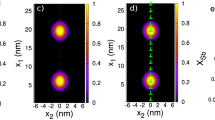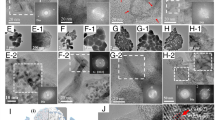Abstract
The goal of net zero emission accelerates scale application of solar photovoltaic. To achieve grid parity technology iterations in monocrystalline silicon growth by the Czochralski method have made great efforts. The aim of this study is to explore heat transfer and thermal stress induced by water-cooling jacket for 12-inch diameter Cz-Si grown from 40-inch diameter crucible. The numerical simulation results show the point of maximum thermal stress shifts from crystal side surface to center of solid–liquid interface along with increase in the distance between water-cooling jacket and crystal. In spite of decrease in overall heat transfer from the crystal occurring with increased jacket distance, convection heat transfer dominates around the triple point and radiative heat transfer prevails at the greater heights. Deflection of the solid–liquid interface increases with the jacket distance. The distance of 20–30 mm is suggested for minimum thermal stress and uniform distribution.
Similar content being viewed by others
Data Availability
No datasets were generated or analysed during the current study.
References
IEA, Renewables 2023 Analysis and forecasts to 2028, 2024, pp. 14–15. https://www.iea.org/reports/renewables-2023. Accessed 27 Jan 2024
IEA, Evolution of solar PV module cost by data source, 1970–2020, IEA, Paris, 2020. https://www.iea.org/data-and-statistics/charts/evolution-of-solar-pv-module-cost-by-data-source-1970-2020. Accessed 27 Jan 2024
IRENA, Renewable power generation costs in 2021, 2021, https://www.irena.org/publications/2022/Jul/Renewable-Power-Generation-Costs-in-2021. Accessed 27 Jan 2024
Helveston JP, He G, Davidson MR (2022) Quantifying the cost savings of global solar photovoltaic supply chains. Nature 612:83–87
Nagarajan SG, Sanmugavel S, Kesavan V et al (2019) Influence of additional insulation block on multi-crystalline silicon ingot growth process for PV applications. Silicon 516:10–16
Srinivasan M, Karuppasamy P, Ramasamy P et al (2016) Numerical modelling on stress and dislocation generation in multi-crystalline silicon during directional solidification for PV applications. Electron Mater Lett 12(4):431–438
Keerthivasan T, Liu X, Srinivasan M et al (2023) The impact on mc-Si ingot grown in a directional solidification furnace by partially replacing the susceptor bottom with an insulation material: A numerical investigation. J Cryst Growth 607:127130
Kesavan V, Srinivasan M, Ramasamy P (2019) The influence of multi-heaters on the reduction of impurities in mc-Si for directional solidification. Silicon 11:1335–1344
Keerthivasan T, Chen CJ, Sugunraj S et al (2022) Influence of radiation heat transfer on mc-Si ingot during directional solidification: A numerical investigation. Silicon 14:12085–12094
Sugunraj S, Karuppasamy P, Keerthivasan T et al (2023) Influence of helium gas flow under the retort bottom to control the impurities in grown mc-Si ingot by DS process for photovoltaic application: numerical simulation. J Cryst Growth 609:127151
Czochralski J (1918) Ein Verfahren zur Messung der Kristallisationsgeschwindigkeit der Metalle. Z Anal Chem 57(8):373–374
Voronkov VV, Falster R (1998) Vacancy-type microdefect formation in Czochralski silicon. J Cryst Growth 194:76–88
Noghabi OA, M’Hamdi M, Jomâa M (2011) Effect of crystal and crucible rotations on the interface shape of Czochralski grown silicon single crystals. J Cryst Growth 318:173–177
Mukaiyama Y, Sueoka K, Maeda S et al (2020) Numerical analysis of effect of thermal stress depending on pulling rate on behavior of intrinsic point defects in large-diameter Si crystal grown by Czochralski method. J Cryst Growth 531:125334
Kalaev V, Sattler A, Kadinski L (2015) Crystal twisting in Cz Si growth. J Cryst Growth 413:12–16
Friedrich J, Jung T, Trempa M et al (2019) Considerations on the limitations of the growth rate during pulling of silicon crystals by the Czochralski technique for PV applications. J Cryst Growth 524:125168
Prostomolotov AI, Verezub NA, Mezhennii MV et al (2011) Thermal optimization of CZ bulk growth and wafer annealing for crystalline dislocation-free silicon. J Cryst Growth 318:187–192
Sim BC, Jung YH, Lee HW (2009) Effect of the ingot cooling on the grown-in defects in silicon Czochralski growth. Jpn J Appl Phys 48:105503
Zhao W, Liu L (2017) Control of heat transfer in continuous-feeding Czochralski-silicon crystal growth with a water-cooled jacket. J Cryst Growth 458:31–36
Su W, Li J, Li L et al (2023) Numerical study on the effect of water-cooling jacket radius on Czochralski silicon. SILICON 15:5307–5315
CGSim, software of STR Group, Inc. http://www.str-soft.com/products/CGSim/. Accessed 27 Jan 2024
Qi X, Ma W, Dang Y et al (2020) Optimization of the melt/crystal interface shape and oxygen concentration during the Czochralski silicon crystal growth process using an artificial neural network and a genetic algorithm. J Cryst Growth 548:125828
Funding
This work was supported by Key Research and Development Program of Yunnan Province of China (Grant numbers: 202103AA080006, 202102AB080016, and 202202AG050012), Yunnan Province Basic Research General Program (Grant number: 202101AT070092), and Kunming University of Science and Technology Double First-Class Initiative Collaborative Projects (Grant numbers: 202101BE070001-010).
Author information
Authors and Affiliations
Contributions
Luxi Li conducted simulations and wrote the draft of manuscript.
Xiaohan Wan analyzed the simulation results and revised the manuscript.
Wenhui Ma, Shaoyuan Li and Shicong Yang reviewed the manuscript.
Corresponding author
Ethics declarations
Consent for Publication
Not applicable.
Competing Interests
The authors declare no competing interests.
Additional information
Publisher's Note
Springer Nature remains neutral with regard to jurisdictional claims in published maps and institutional affiliations.
Rights and permissions
Springer Nature or its licensor (e.g. a society or other partner) holds exclusive rights to this article under a publishing agreement with the author(s) or other rightsholder(s); author self-archiving of the accepted manuscript version of this article is solely governed by the terms of such publishing agreement and applicable law.
About this article
Cite this article
Li, L., Wan, X., Ma, W. et al. Effect of Water-Cooling Jacket on Thermal Stress of Large-Diameter Silicon Grown by Czochralski Method. Silicon (2024). https://doi.org/10.1007/s12633-024-03004-w
Received:
Accepted:
Published:
DOI: https://doi.org/10.1007/s12633-024-03004-w




